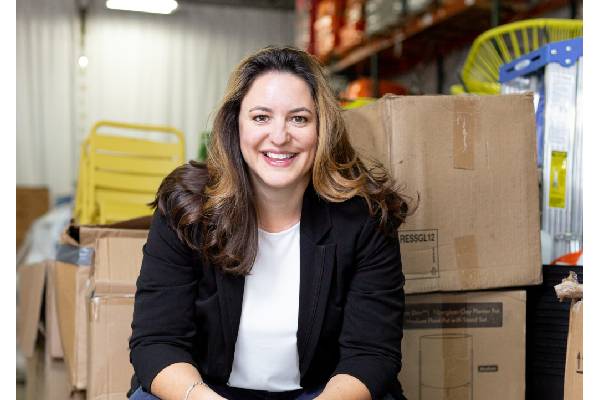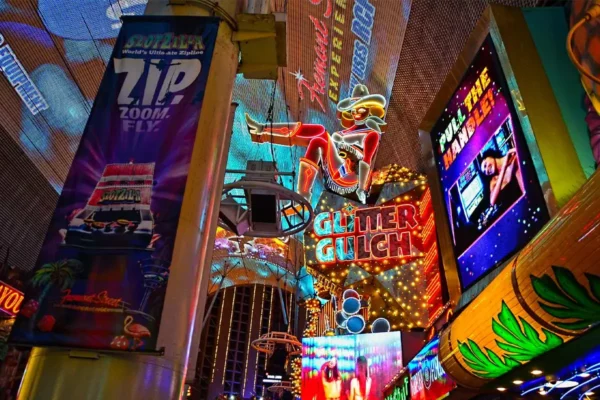By Ray Smith
Jessica Sibila might have a better shot at tackling an NFL fullback or gaining control of a runaway train than reining in skyrocketing drayage rates, a decades-old thorn in the side of tradeshow exhibitors that has festered into a most debilitating infection.
That’s one of the myriad challenges for Sibila, principal of Jessica Sibila Consulting in Denver and executive director of The Exhibitor Advocate, a nonprofit organization founded earlier this year to make sure the exhibition and event industry remains viable.
The Exhibitor Advocate “is dedicated to amplifying the exhibitors’ voices,” she says, making sure they’re heard loud and clear by show management, labor unions, service providers and suppliers.
For too long, show attendees have been the focus of the convention industry, Sibila says in an interview with ECN. That must change.
“We need to recognize and appreciate the value of the exhibitor in this equation,” Sibila explains. “Without the exhibitors, we don’t have a tradeshow. We must work together to address exhibitor issues, implement best practices, and ensure the success of all stakeholders to sustain this industry for the long term.”
One of the first steps toward accomplishing that goal is raising awareness of exhibitors’ needs. Every show should establish an exhibitor advisory council—not a “ceremonial council, but a working council,” Sibila stresses. Show management must understand the importance of open, transparent communication with the council.
“It’s important that every show manager has an exhibitor advisory council. Show management needs to understand where the pain points are for their exhibitors and work on addressing those issues with the GSC [general service contractors] and suppliers to the show.”
PRICING CONCERNS
The Exhibitor Advocate wants economical, more consistent exhibiting costs, as well as simpler rules and pricing models with fewer restrictions.
“Pricing is an incredibly complex issue,” Sibila admits. “I don’t know if we can say there’s one particular top issue within pricing. There’s a number of issues. First and foremost, for exhibitors, we need predictable costs and predictable pricing. We need to know whether freight will be considered special handling or not.”
Drayage, or the transport of freight over a short distance, such as from a warehouse to a tradeshow venue, has long been the top issue for exhibitors. Drayage rates vary from show to show, depending on factors such as weight, dimensions of the freight, number of pieces being shipped and distance from pickup to delivery address. In general, drayage comprises 10 percent of a tradeshow budget.
It can be difficult to calculate, and exhibitors are sometimes slapped with unexpected costs.
“We must talk about the issue,” Sibila insists. “We can’t ignore it. Exhibitors simply want to understand the pricing and predict our costs for an event. No hidden fees. No misunderstandings.”
Brad Falberg, president of Atlanta-based booth designer Exhibitus Inc., has been talking about drayage for years. He recalls drayage being $40 to $60 per cwt (100-pound weight) when he started in the industry 25 years ago. It’s gone above $300 per cwt in the last year.
He says exhibitors must understand that drayage is the revenue collection method that the show organizer and general contractor use to pay for all of the general costs to run the show, such as providing aisle carpet and registration desks, so that the show organizer doesn’t have to pay the general contractor for these services.
For example, an average 20-foot-by-20-foot display booth usually costs about $60,000. Falberg has learned that one crate is needed for every $10,000 spent on the exhibit, and the average crate weighs 1,000 pounds. If drayage is $120 per cwt, the bill would be $7,200.
That’s more than it cost to ship from Fresno, California, and they may have moved the crates only a few hundred yards.
“The problem is that using weight as the basis for generating revenue to run the show has had the unintended consequence of causing exhibitors to continue to suppress what they bring to a show, thereby reducing the effectiveness of the medium,” Falberg says. “Imagine being a retailer that is charged higher rent in the mall the nicer your store design is.”
SMALLER EXHIBITS
Sibila is not an economist, but she understands inflation. It’s being felt across all sectors of the economy; however, she knows of exhibitors who went to shows in the same city, at the same venue, with the same amount of freight, and at one show they paid $6,000 to $7,000 in drayage, and $19,000 at the other show. She’s seeing increases in drayage pricing models that “honestly, are unjustifiable.”
Rising drayage rates sparked a trend toward reducing exhibit booth size and weight, along with cutting back on the number of shows exhibitors attend, according to industry reports.
Exhibitors realized that if they reduced the weight of their exhibits, they could control a major expense in drayage.
“So, they told their exhibit house to make the exhibit lighter,” Falberg says. “In the meantime, the show contractor needed to maintain their revenue level, so, as you might expect, they increased the drayage at an accelerated rate.”
However, the weight of exhibits can only fall so low. Falberg compares it to “terminal velocity,” or in this case, terminal weight reduction. He predicts that as the weight of exhibits reaches a minimum, drayage rates will also stabilize as the show contractor receives the necessary revenue for the given weight.
Some shows are sympathetic to exhibitors’ plight. During her August 12 guest appearance on “The Don and Mike Show,” Sibila handed kudos to the National Association of Broadcasters (NAB) for changing drayage rates from weight-based to $3.85 a square foot, regardless of quantity, weight or volume.
“We understand inflation and that some expenses are naturally rising. But the increases we’re seeing in drayage far outpace inflation, the CPI [consumer price index] and labor rates,” she points out.
SHARING DATA
While rising costs are The Exhibitor Advocate’s first priority, other issues need to be addressed. Sibila wants show management to share specific buyer data, metrics and leads with exhibitors. It would improve audience engagement and increase return on investment through multiple channels.
“Access to data and metrics is a big one. Inconsistent pricing and information on show service kits compared to the order system online. Complicated show rules and regulations. There’s plenty of work to do, and we want to help management address these issues with their exhibitors,” Sibila says.
Show management has always protected data on attendees as being proprietary information owned by the show, often unwilling to share that data with exhibitors or charging extra for it.
“The reality is, by participating in shows, there is an expectation by exhibitors that we have access to that data,” Sibila says. “I understand privacy, but there is an understanding when you walk into a show as an attendee that you are going to be sold to, that people are going to email you with offers and deals and, honestly, the more data an attendee is willing to give to an exhibitor about when their buying time is and what they’re looking for and how serious of a buyer they are, then the more responsible I can be as an exhibitor for how I market to you.”
Other issues that The Exhibitor Advocate wants to tackle include exorbitant hotel room rates when a show comes to town, show wi-fi fees that are through the roof and $13 bottles of water.
JOIN THE CAUSE
The Exhibitor Advocate is filling a void left when the Trade Show Exhibitor Association (TSEA) dissolved about a decade ago. No other association is specifically dedicated to supporting exhibitors and addressing their needs, Sibila says.
“Many of us were part of TSEA and have seen the exhibitor voice get lost over the last 10 years without TSEA. As we began to see some red flags that were then exacerbated as we came back to face-to-face events after COVID, we determined that it was critical to incorporate the association now.”
Sibila, who grew up in Boulder, Colorado, and majored in communication at the University of Colorado, makes it clear during the ECN interview that The Exhibit Advocate is not about her. It’s a committee of 10 people who’ve been talking about these issues for years.
Financial sponsors have an opportunity to help build The Exhibitor Advocate and shape how the organization shares information with the tradeshow community. Membership in The Exhibitor Advocate is free, and donations to the cause can be made via GoFundMe and the website: exhibitoradvocacy.com.
Donations make it possible to provide expert advice, research and tools to act on behalf of all types of exhibitors to address challenges and prominent pain points, and to ensure that the exhibition and event industry remains a valuable and irreplaceable marketing channel.
“We have a very seasoned group of volunteers who work with our organization,” the executive director adds. “We want to make sure exhibitors have a place to go when they have a challenge. Some of this may be seeing challenges come through and pairing exhibitors with one of our seasoned volunteers who’ve been in this industry a long time, maybe even in their part of the industry. It helps them understand opportunities and ways they have to address their challenge.”
The group’s founders are Exhibit Force, HP, HD Supply, Bradley, Verizon, Nuvista, Medtronic, United Brotherhood of Carpenters and Joiners, Jessica Sibila, Bruker, Tradeshow Logic and SAP.






























